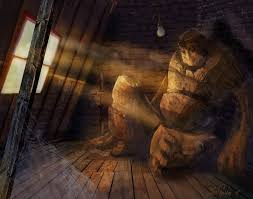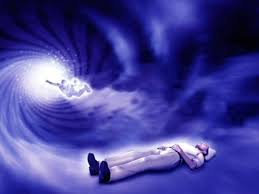
Oy Vey! The Jewish Golem and The X-Files
Golems are everywhere. In modern popular culture, the Jewish Golem — sorry, Gollum from “The Lord of the Rings” books and movies isn’t a golem— has appeared in many TV shows, films and books. Most recently, stone golems called “Watchers” help Noah’s family build their life vessel in this year’s film Noah. 2013 saw Sam and Dean Winchester battle a golem in an episode of Supernatural; a golem protected a child in an episode of the new show Sleepy Hollow. Go back a few years to 2006, and you’ll find Bart Simpson taking advantage of two golems — a male and a female — in a “Treehouse of Horror” episode of The Simpsons.

Polytheism in Early Africa
Much of the subject matter regarding religion in early Africa seems alien to someone living in the modern Western world. Everything has its own explanation and cause in nature. We still fear things like the flu, earthquakes, or illnesses, but we know now that they have natural rather than supernatural causes. People acting strangely are the result of malicious spirits, our ancestors live somewhere beyond our own shores and the gods must frequently be placated to keep them happy. It was a fundamentally different worldview than what the West believes today.

The Cropsey Maniac
The story of the Cropsey Maniac exemplifies a legend used at summer camp to reinforce what is expected of the group. The Cropsey legend is local to New York, and often New York City children are sent to camp during the summer as a way to experience nature away from modern city life. In a strange environment with new peers and unusual authority figures, campers may feel insecure at first.

The Trouble with Princes
I grew up in household where the kids learned to sleep through the rock-and-roll music emanating from the basement. The music was courtesy of my father, civil engineer and rock guitarist in equal measures. He grew up listening to rock when it was still young, just a decade past the sixties. He is a product of those turbulent years that deeply and irrevocably changed our world. And likewise I am a product of my upbringing—my taste in music no exception. But is that all? Am I—and will I always be—only the product of the world I live in? Are we stuck in a cycle of self-interest and cynicism, doomed to repeat our own history?

Evaluation of Electronic Medical Record Implementation and Patient Satisfaction

The Phenomenon of Impulse Buying
For many people, impulsiveness can be intuitive by nature. Impulsiveness can be related to their personality, low-inhibitions, external factors or all of the above. To an extent, this can be common and not harmful, but there comes a point when the individual has lost control of his or her impulsive behaviors. This is visible in common realms such as shopping. Rook (1987) indicated that over the past 35 years, research has shown that impulse buying existed across numerous consumer markets.

Hannibal, MO: “America’s Hometown” Amidst Fictional Landscape
We, as humans, are continually connecting with our surroundings in an interactive manner that has a profound effect on how we move through the world subjectively and react to the landscapes we inhabit. Bonding with specific locales is natural and pronounced when each individual is able to thrive within a regional group that has historical ties to an area rich with culture, generating substantial tradition. Fundamental to this place-based connection is an understanding of the transformative nature of landscapes.

A Journey to Other Worlds
The astral body appears in many different cultures throughout time and throughout the world. In Egypt, the “KA was not the soul of man . . . but its vehicle” (Muldoon & Carrington, 2011, p. xxii). In the Qur’an, Muhammad’s astral body travels in the Isra and Mi’raj story. And, among other sacred and secular texts, the astral body appears in Hindu scripture, Taoist practice, and even Christianity. In his article regarding the afterlife, Woolger (2014) notes that “in such journeys in the world religions and innumerable tribal practices” scholars have “described a common pattern of ‘ascent’, which is to say an ecstatic, mystical or out-of body experience, wherein the spiritual traveler leaves the physical body and travels in his/her subtle body into ‘higher’ realms” (para. 4).

Rewriting the Book on Letter Writing
While visiting New Haven, Connecticut, English professor Marty Townsend read a column in The New York Times titled “The Death of Letter Writing.” It got her thinking about how she could bring that conversation to students. “By the time I was flying home, I was making notes like crazy, with the course in mind,” Townsend says. She submitted a…

Teaching The Literature Review
Campus Writing Program Coordinator, Jonathan Cisco, recently had an article published in the ISSOTL Journal: Teaching and Learning Inquiry. The article is available on JSTOR.